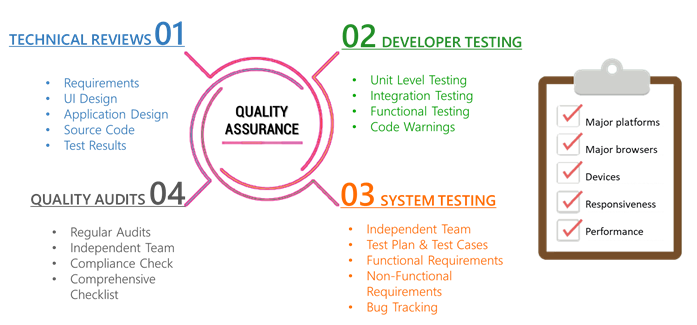August 26th, 2020
Category: Automation,Software Testing
No Comments
Posted by: Team TA

There are two kinds of testing in the world of software—manual and automated. While some types of manual testing such as discovery testing and usability testing are invaluable, some others like regression testing and functional testing being implemented manually in a repetitive manner is a fairly wasteful practice for humans. It’s these sorts of repetitive tests that lend themselves to check automation.
Test automation is the practice of running tests automatically, managing test data, and utilizing results to improve software quality. It’s primarily a high-quality assurance measure, but its activities involve the commitment of the entire software production team. From business analysts to developers and DevOps engineers, getting the most out of test automation takes the inclusion of everyone.
Criteria for Automation
A test needs to meet some criteria in order to be automated—otherwise, it might end up costing more than it saves. After all, one major goal of automation is to save time, effort, and money. The general set of criteria being followed are as below. It may vary according to the organization.
- Repeatability
The test must be repeatable. There’s no sense in automating a test that can only be run once. A repeatable test has the following three steps:
- Set up the test, including data and environment.
- Execute the function and measure the result.
- Clean up the data and environment.
- Determinant
When a function is a determinant, it means that the outcome is the same every time it’s run with the same input. The same is true of tests that can be automated. A few examples are simple mathematical functions such as addition, multiplication, etc.
That said, the software may use such a high number of variable inputs that it’s difficult to have the same result over time. Some variables may even be random, which can make it difficult to work out a particular outcome. Software design can atone for this by allowing test inputs through a test harness.
- Unopinionated
You cannot automate matters of opinion – for example – “user feedback”. However, manual testing processes such as usability testing, and beta testing will add value here.
Types of Automated Tests
Theoretically, there is a huge number of tests that can be automated that not all can be listed out. Still, a few integral tests that can be used for testing software are as follows.
- Code Analysis
There is no dearth for code analysis tools – for both static and dynamic analysis. Some of these tests look for security flaws, others check for style and form. These tests run when a developer checks in code.
- Unit Tests
Unit tests are designed to check a single function, or unit, of operation in isolation. They typically run on a build server. They need to be fast and are designed to test the code only, not the external dependencies.
- Integration Tests
Integration tests, sometimes called end-to-end tests—need to interact with external dependencies and are hence more complicated to set up. Often, it’s best to create fake external resources for the ease of test implementation.
- Automated Acceptance Tests
Behavior-driven development (BDD) and automated acceptance test-driven development (AATDD) are similar. They both follow a similar practice of creating the acceptance test before the feature is developed. They serve as regression tests in the future, and they ensure that the feature holds up to what’s expected.
- Regression Tests
While AATs and regression tests are forms of functional tests, how they’re written when they’re written, and whom they’re written by are vastly different. Like AATs, they’ll be driven through an API by code or a UI. Tools exist to write down these tests using a GUI.
- Performance Tests
Many forms of performance tests exist, but all of them test some aspect of an application’s performance. Will it hold up to extreme pressure? Is it a quick response time we’re after? How is the scalability?
At times, it’s important to have an environment that should be able to handle a large number of users. Cloud resources are available to help with this kind of testing, but it’s possible to use on-premises resources as well.
- Smoke Tests
The purpose of a smoke test is to ensure that all services and dependencies are up and running. A smoke test may not necessarily be an all-out functional test. It is run as a part of an automated deployment or triggered through a manual step.
Team TA is also into providing independent test automation services. Our QA team is currently working on implementing test cases for some of our major clients. We are using a very effective Carina framework with Java for scripting the test cases. Recently, we have begun working on another much sought after automation framework: Pytest with python for scripting the test cases.
With these efficient frameworks at our disposal, we are always ready to take on challenges in the test automation space. If you are someone who is looking for a technical partner providing software testing solutions, look no further.
